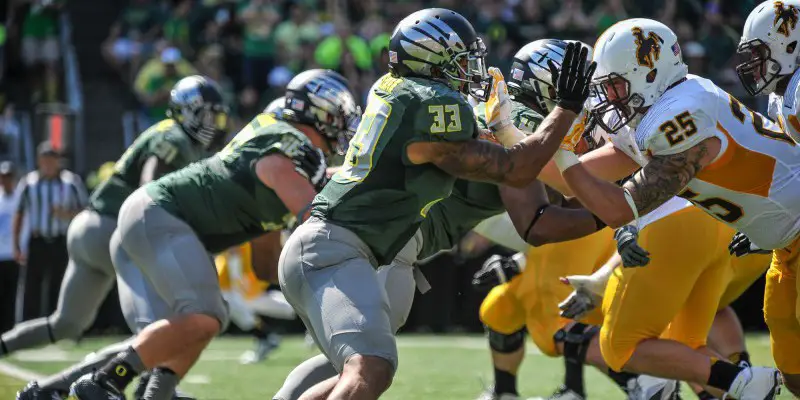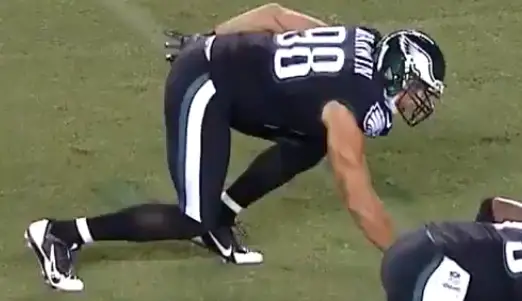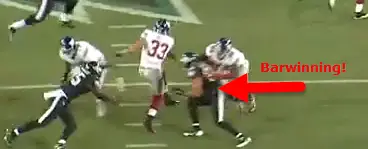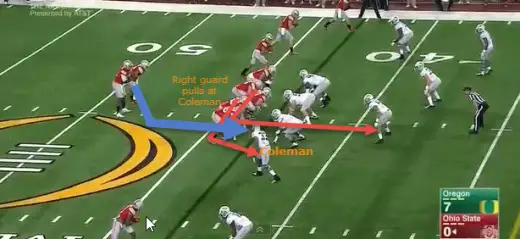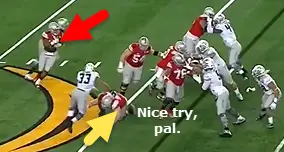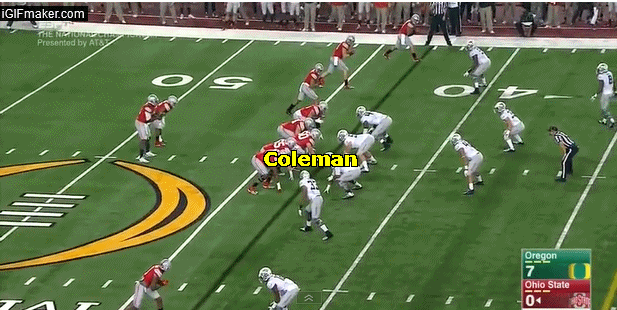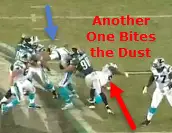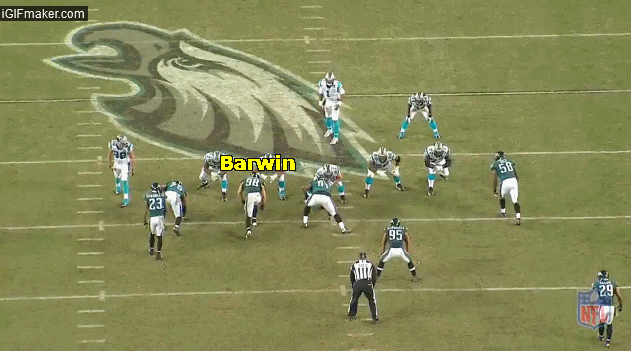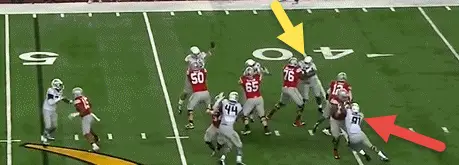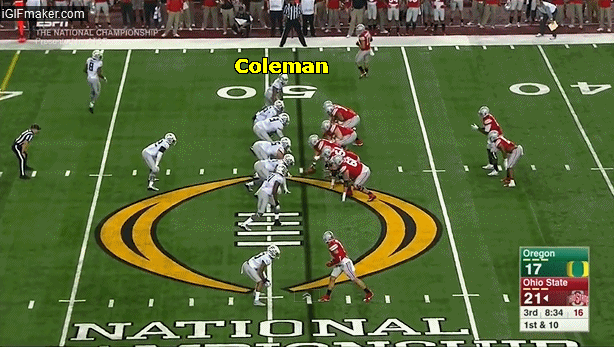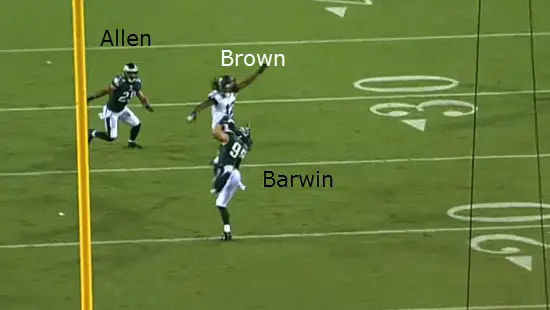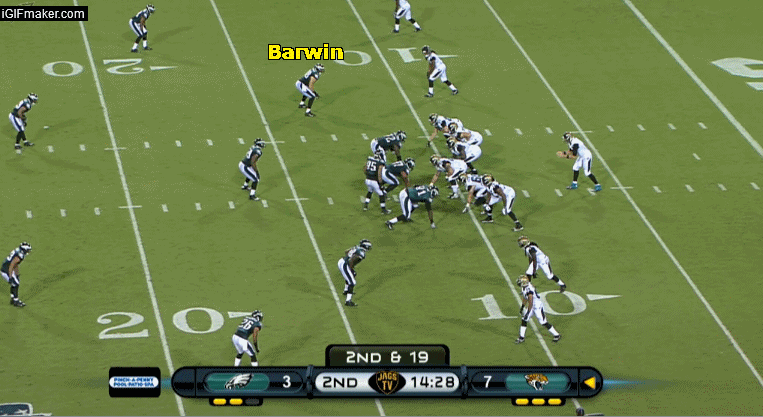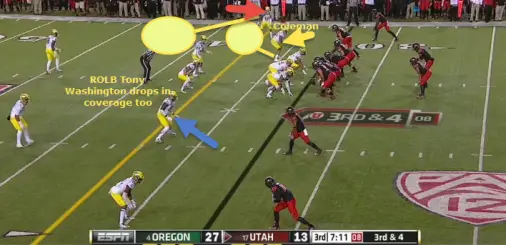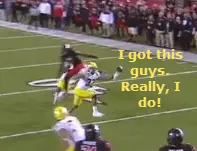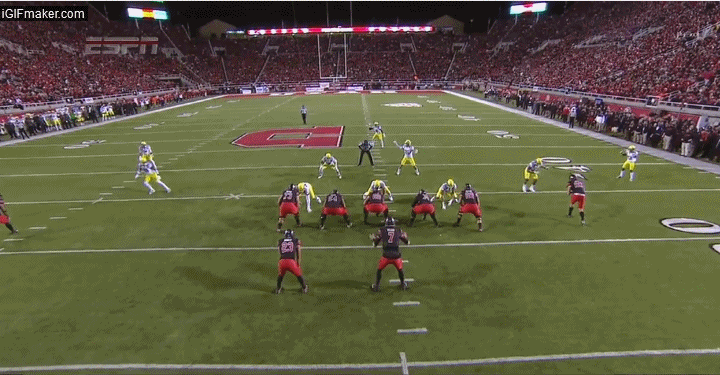It was March 2013 and new Philadelphia Eagles head coach Chip Kelly had a problem. The 3-4 defensive scheme he brought from Oregon needed a versatile left outside linebacker. In his search, Kelly found the man who would become the centerpiece of his defense: Connor Barwin.
Meanwhile, in Eugene, Ore., a safety-turned-linebacker named Tyson Coleman waited for his moment behind veteran Boseko Lokombo. His patience paid off in 2014, and he became the starting left outside linebacker as a redshirt junior. While starting at a demanding position, Coleman embraced his role during the Ducks’ championship run.
Both schemes requires that the left outside linebacker exhibit a diverse range of skills: from being an edge rusher to being nickel cornerback. Eagles defensive coordinator Billy Davis bestowed upon this position a fitting nickname. ”The position is called the Jack,” Davis said, according to PhillyMag’s Sheil Kapadia, ” [t]he jack of all trades, is what it was originally named.”
The Jack linebacker does not have to be a master of all of his tasks, but he must be competent across the board in a variety of areas.
Stuffing the Run
In Week Six against the New York Giants, Barwin had a phenomenal night, accounting for three sacks and a forced fumble. He was equally impressive in keeping the outside run lanes sealed off. A third-and-long play early in the second quarter exemplified Barwin’s prowess in maintaining outside contain.
In the sequence below, the Giants attempted to run an outside zone. Tight end Larry Donnell (below, red arrow) stepped to the right to push Barwin (below, blue arrow) out of the running lane.
Barwin (below, yellow arrow), however, masterfully bent the edge. Running back Peyton Hillis (below, red arrow) wanted Barwin to lose gap discipline so that he could run around him. Barwin, however, maintained his gap, and thus forced Hillis inside.
Barwin (below, red arrow) used an excellent rip move to position himself for the tackle. Hillis (below, No. 33) would have had room to run upfield if Barwin failed to get off his block. Fortunately for the Eagles, Barwin won this one-on-one matchup and forced a fourth down.
It is no easy feat to maintain the proper angle while setting the edge. If Barwin were too aggressive, or failed to disengage from his blocker, he would have risked creating a huge lane outside or inside, respectively. From whistle to whistle, Barwin showed excellent instincts to shut down the run.
Though the Ducks gave up 296 rushing yards against the Ohio State Buckeyes in a 42-20 defeat in the College Football Playoff National Championship Game, Coleman showed a knack for getting to the ball.
In the middle of the first quarter, Ohio State ran a variation of the power sweep, with the path of the two pulling guards illustrated below by red arrows. Coleman (below, No. 33) faced the daunting task of dealing with pulling lineman running full speed ahead.
Coleman (below, No. 33) immediately recognized that right guard Pat Elflein (below, yellow arrow) bearing down on him. He angled himself on the edge to resist the attempted cut block. Running back Ezekiel Elliott (below, red arrow) was unable get to outside because Coleman effectively contained the edge.
Tossing aside a 300-pound offensive lineman and chasing down the NCAA’s third-leading runner on the same play is impressive. I wish good luck to whoever runs to the outside when Coleman plays the edge this well.
Pass Rusher
As a pass rusher, Barwin had an outstanding 2014 season, leading the NFC with 14.5 sacks. He earned one sack in Week 10 against the Carolina Panthers as an inside linebacker while showing blitz in the Eagles’ 3-3-5 package. Lined up in the left B-gap, Barwin (below, No. 98) looped around into the right A-gap on this blitz.
Barwin (below, #98) did two impressive things on this play. First, he hustled over two gaps to get himself in position to make a play. Second, he threw the left guard, Amini Silatolu (below, red arrow), aside like a rag doll to take down Cam Newton (below, blue arrow) for a sack.
The combination of strength and quickness Barwin displayed on this play explains why Kelly wanted him in the Eagles’ defense. Such a thorough beatdown is awesome to watch.
Unlike Barwin, Coleman has not yet recorded impressive pass rushing stats. This was partly because Ducks defensive coordinator Don Pellum frequently used him in coverage. He will have to become a more polished pass rusher to garner the attention of NFL scouts. Nevertheless, one of his three sacks last season gave the Ducks a chance to overcome a four-point deficit in the third quarter against Ohio State.
Coleman’s (below, yellow arrow) job on this play was simple: keep outside contain and get the sack. He had to beat right tackle Darryl Baldwin (below, right arrow) around the edge to prevent quarterback Cardale Jones (below, green arrow) from rushing upfield.
Coleman (below, yellow arrow) maintained his leverage, and in the process, collapsed the pocket and controlled the edge. Meanwhile, right outside linebacker Tony Washington (below, red arrow) pressured Jones from the other side.
Jones could not escape on either the right or left side. He unwisely retreated as Coleman closing in. The quarterback panics and the ball slips out of his hand for a fumble that the Ducks recovered, as Coleman finished his pursuit.
Defenses get gashed when an edge rusher allows a mobile quarterback to leave the pocket. Coleman deserves credit for having the discipline to stay in control while pursuing Jones.
Coverage
The Eagles did not truly unleash Barwin as a pass rusher until 2014 because he was the best of the team’s outside linebackers in coverage. In 2013, he dropped in coverage about 42% of the time.
One play in the 2013 preseason against the Jacksonville Jaguars shows Barwin’s (below, red arrow) natural ability in underneath zone coverage. Eagles’ DC Davis also had ROLB Trent Cole (below, green arrow) drop in coverage on this play. It is rare that both outside linebackers will drop back on the same play, but the ability to pull this off adds another dimension to the 3-4 scheme.
Safety Nate Allen (below, No. 29) provided help over the top against Jaguars receiver Mike Brown (below, No. 12), while Barwin (below, No. 98) took the underneath zone. With his eyes on the quarterback, Barwin tipped the pass to himself for an interception.
The fact that Barwin cut off the throwing lane and made the interception testifies to his well-rounded skill set, leaving one to wonder whether there anything he cannot do.
The Ducks used a similar look against Utah this season. Coleman (below, yellow arrow) and Washington (below, blue arrow) line up across from slot receivers, positioning themselves for underneath zone coverage. Cornerback Ifo Ekpre-Olomu (below, red arrow) lined up to drop back behind the underneath zone.
The coverage confused the Utes’ QB, resulting in an impressive juggling act and interception by Coleman.
Coleman has the potential to be a game changer in the backfield or in coverage. He, like Barwin, has such a diverse skillset that he can be a menace all over the field.
Conclusion
The Eagles and Ducks are both poised for the return of their jack of all trades next season. Barwin is coming off of a season in which he earned second-team All-Pro and Pro Bowl honors. Coleman, meanwhile, has a broad range of skills, but needs to establish himself as a bona fide pass rusher next season to garner scouts’ attention. Like Barwin, Coleman is a gifted player who gives his team strategic flexibility.
I may be in Pennsylvania, but “oh how we love to learn about your beloved Ducks!”
Joe Kearns
Oregon Ducks and Philadelphia Eagles Football Analyst for CFF Network/FishDuck.com
State College, Pennsylvania
Top photo by Kevin Cline
Joe Kearns is a senior at the Pennsylvania State University majoring in Economics. He intends to pursue a career in the banking and financial services industries, but is also a lifelong diehard Philadelphia Eagles fan who enjoys analyzing college and pro football film as a hobby. Along with being a fan, Joe’s football knowledge comes from his days as a center, defensive tackle, and long snapper for his high school in Mt. Lebanon, Pa. Though he is a Nittany Lion, he has taken a great interest in the Oregon football team since Chip Kelly became the Eagles head coach. He loves pancakes ( and not just the breakfast food).

